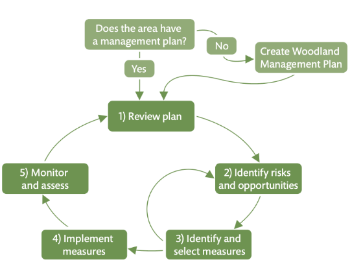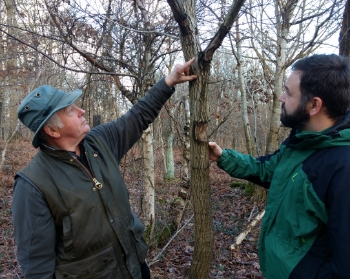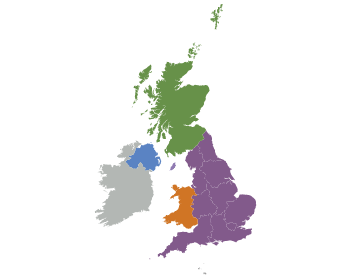Decision support tools
A range of online tools are available to support owners, managers, and decision makers understand the impacts and risks from the changing climate to the forest and woodlands they manage, and how they might adapt their woodlands and practices to increase resilience. There are also tools and models available to allow landowners and managers to estimate and monitor carbon stocks in trees and woodlands.
Tools to inform adaptation planning
Tool
Organisation
Information & Training
Description
Cost
UK Climate Resilience Programme, UKCEH, University of Reading, Institute for Environmental Analytics
Visualise changes to future indicators of climate risk under a range of emissions scenarios
Free
Forest Research
Assess the current and future suitability of tree species for a forest site
Free
Forest Research
Provides guidance on the development of composition and structure within a forest stand. Compatible with the ESC tool.
Free
Forest Research
Estimate the probability of wind damage to conifer stands
Free/Paid
Sylva Foundation
Tool for woodland mapping and management planning
Free/Paid
Forestry Commission, Natural England, RHS, Mayor of London, The Tree Council, Forest Research
Helps to inform decisions on what trees are suitable for a changing climate in urban locations
Free
Forest Research, Forestry Commission, B4EST, IBBR
Compare a site’s present or projected climate to locations across Europe with the similar projected or present climate
Free
Climate Risk Indicators is a free online tool to visualise future UK climate change risks. Users can visualise future climate variables such as temperature and variables, and also risk indicators including for wildfire, agriculture, river levels, and transport. The climate variables and risk indicators are available at different spatial resolutions and for a range of future emission pathways. Guidance and tutorial videos on how to use the Climate Risk Indicators tool are available through the Climate Resilience Programme.
The Ecological Site Classification (ESC) decision support tool assesses the current and future ecological suitability of tree species for a forest site, with users providing site and soil information. ESC considers climatic and soil variables and provides information for over 50 tree species. Information about ESC is available from Forest Research, as are a short series of tutorial videos.
Forest Development Types (FDTs) are a long-term vision of how the species composition and structure of a forest stand are intended to develop over time, with the aim of improving forest diversity and resilience. The FDTs are designed to be compatible and complement the ESC tool and can be viewed from the dropdown menu at the top of the ESC site. A guide is available that describes the concept of FDTs, alongside flashcards that describe the composition, structure, climatic requirements and management options of each Forest Development Type.
forestGALES is an online or computer-based tool which allows forest managers to estimate the probability of wind damage to any conifer stand in Britain, according to site and stand properties. It supports decision-making by calculating the critical wind speed that would be expected to damage a stand, the current risk of overturning and stem breakage, change in risk over the life of the crop, and the effect on risk of thinning and creation of brown edges. A free web-based version is available for calculating the risk to a single stand, and full-function paid-for version can be downloaded.
myForest is a free online tool from Sylva Foundation, helping woodland owners, managers, and agents to create maps, complete inventories, produce UKFS-compliant woodland management plans, and even submit applications for government incentives or felling licences. Also included is the Woodland Assessor, a self-assessment tool aimed at helping woodland managers improve practice to comply with the UKFS. A Premium (paid) version with enhanced functionality includes Ordnance Survey mapping and more. Access to Forest Lab, a woodland resilience initiative in partnership with Forest Research, is available via the myForest platform.
The Right Trees For A Changing Climate Database lists the characteristics of tree species that will be suitable and adapted for the predicted climatic conditions that urban areas will experience for the rest of this century. It is intended for use to help planners, landscape designers, developers, ecologists and other professionals decide what trees are suitable to plant in urban areas, but should always be used in conjunction with sound advice from a qualified arboriculturist.
The ClimateMatch tool provides a visualisation of regions with a similar current climate to the projected future climate of a region, and also regions with a similar projected climate to the current climate of a region. The tool can be used for locations across Europe. It shows how a climate niche will shift under future conditions. Information about the tool is available from Forest Research and B4EST.
Tools for estimating and measuring carbon
Tool
Carbon pools assessed
Platform
Scale
Target forest type
Timescale
Data inputs
AGB
BGB
Soil
Planting emissions
Excel
Forest stand(s)
Woodland / forest
Projects forward
Site& management information
AGB
Soil
Farm emissions
Excel & website
Farm
Hedges, fruit trees, woodland
1 year
Site & management information
Tree AGB
Crop AGB
Excel
Farm
Agroforestry
Projects forward
Site & management Project information
AGB
BGB
i-Tree software
Single tree – region
Established urban and forest
1 year
Field survey
AGB
BGB
Website
Forest – national
Established trees of any type
1 year
Google satellite imagery
ABG
BGB
Soil
Deadwood carbon
Litter carbon
Wood products
R
Forest stand(s)
Woodland/forest
Projects forward
Site & management information
AGB = Carbon stored in above-ground biomass: i.e. carbon in the tree’s trunk and branches
BGB = Carbon stored in below-ground biomass: i.e. carbon in the tree’s roots
Soil = Carbon stored in the soil
Emissions = Carbon released as part of management activities (e.g. tree planting or farm activities)
The Woodland Carbon Code is the voluntary quality assurance standard to sell carbon credits from the carbon stored in UK woodland, though woodlands must be registered and meet eligibility requirements to qualify. It includes a tool which can be used to predict the carbon sequestration for woodland establishment in the UK for different species, spacing, yield classes and management types. The WCC is internationally recognised for its high standards and its inclusion of soil impacts from tree planting, capacity to assess effects of different tree species and spacings, and inclusion of planned thinning of trees. As the tool was originally devised for forest planting it does not include all densities which would be used in agroforestry systems.
The farm carbon calculator provides estimates of total annual emissions and sequestration for a farm. The calculator includes estimated carbon sequestration (annual absorption by trees) for hedgerows, woodland and ‘in field trees’, but isn’t specifically set up to address agroforestry systems.
The Yield-SAFE model is designed specifically to assess carbon and farming impacts of agroforestry systems, allowing comparison of crop only, forest only and mixed systems. It specialises in modelling the combined impacts of trees on crops, estimating the biomass of both crops and trees and accounting for shading and water effects of trees on crops.
i-Tree Eco is free software developed for estimating carbon in urban trees, though it has been used for other forest types. It estimates carbon in existing tree resources, requiring a field survey to calculate carbon stocks. The tool provides estimated carbon storage and sequestration rates only for the year of the survey and does not project future carbon stocks.
i-Tree canopy is a web-based tool which can be used to estimate the tree canopy cover of a site. It can therefore be used to measure multiple different types of trees. It estimates carbon storage using a simple average carbon per ha of tree canopy. Like i-Tree Eco, it does not project future carbon stocks.
The NRW Carbon Storage Calculator is a tool provided by Natural Resources Wales (NRW) to help individuals calculate the amount of carbon stored in trees. This calculator allows you to measure the circumference of a tree, estimate its age, and then determine the dry weight and the amount of carbon stored in it.
CARBINE-R is a forest carbon accounting model developed by Forest Research to address questions about the carbon and greenhouse gas balances of forestry systems. It works by aggregating stand-scale estimates. CARBINE can model carbon stocks for 19 different tree species at a range of growth rates and under a variety of management settings. The model outputs the carbon stocks in trees, roots, litter, deadwood, soil and harvested wood product pools. CARBINE-R is the latest version of the model and is available on request.
Further resources



UKFS Adaptation Practice Guide download
The UKFS Practice Guide ‘Adapting forest and woodland management to the changing climate’ guides practitioners through the process from assessing climate change risks to implementing adaptation measures.
Printed copies are available to purchase from Forest Research.
Download the UKFS Adaptation Practice Guide
Printed copies are available to purchase from Forest Research.
"*" indicates required fields


